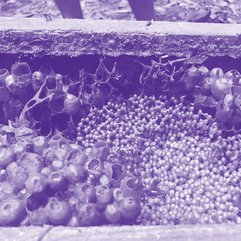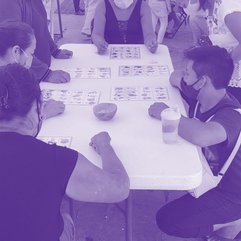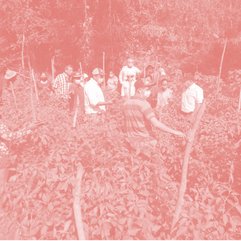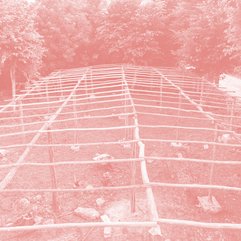KUXAÁN SÚUM
This text is also available in Spanish:
The grandparents and the new generations of Maya People that live currently in the Yucatán region keep in our hearts and minds the wise, ancient words of our forebears. The prophetess Xnuc Maní, also known as the Old Woman from Maní, or metaphorically Maní’s grandmother, revealed several omens that echo loudly, like the snail horn echoes in the mountains and the crops, or the tunkul echoes through our rocky land.

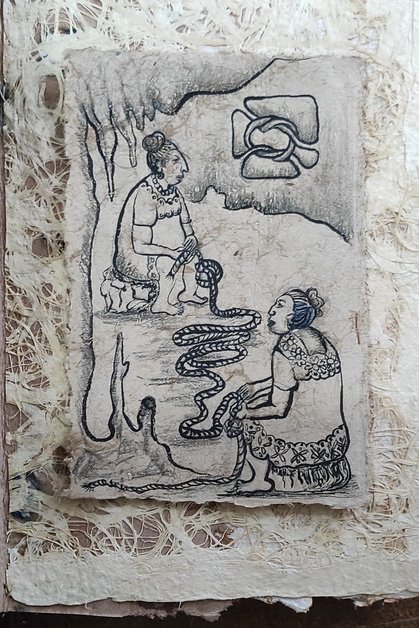 Kuxaán Xúum, Cecilia Moo, artists' handmade illustrated book on the Kuxaán Xúum story (The rope of life), 2022.
Kuxaán Xúum, Cecilia Moo, artists' handmade illustrated book on the Kuxaán Xúum story (The rope of life), 2022.
After the foreigners took possession of these lands and had settled in Maní for a few years, they found a wooden box inside of the Xcabachén cenote.2 The mysterious box caught the attention of a conquistador and a sparkle of greed flickered in his eyes. The foreigners removed the box from the cenote and tried to open it. It did not take them long, as the old, humid wood yielded soon to the furious blows of the conquistador. The mystery grew: inside the box they found a rope made of agave fibers. Nor precious metals nor jewels were inside! Years before, Maní’s grandmother had spoken about a long rope whose function it was to measure the distance between villages in order to unite them.

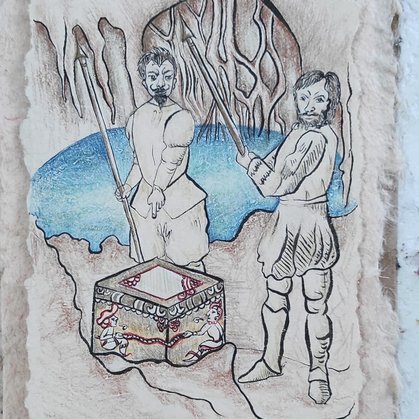 Kuxaán Xúum, Cecilia Moo, artists' handmade illustrated book on the Kuxaán Xúum story (The rope of life), 2022.
Kuxaán Xúum, Cecilia Moo, artists' handmade illustrated book on the Kuxaán Xúum story (The rope of life), 2022.
A long rope shall join the villages together. This rope will unite Maní with T'Hó (Mérida) and many other places
...the grandmother said rhythmically. And so that it could fulfill its purpose, the rope was kept safe in a box and placed inside the cenote of Maní.

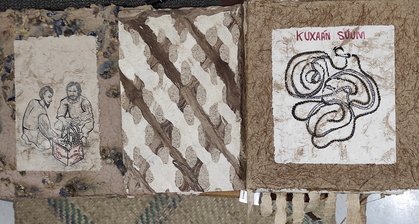 Kuxaán Xúum, Cecilia Moo, artists' handmade illustrated book on the Kuxaán Xúum story (The rope of life), 2022.
Kuxaán Xúum, Cecilia Moo, artists' handmade illustrated book on the Kuxaán Xúum story (The rope of life), 2022.
The foreigner greedily pulled out the rope, but upon finding neither gold, nor any precious metal, he wanted to put it back in the box. When he tried to do so, however, the rope did not fit inside, so he decided to cut it in half. He cut it in one stroke and blood spurted out from where the cut was made! With every cut, more blood gushed out. Hence its name: the living rope, or kuxaán súum3 in the gentle language of our grandparents. It is said that they tried to put the rope back in the box several times without success and left it there in pieces, bleeding. When we told this story to men and women, campesinos and campesinas [peasants] involved in the Escuela de Agricultura Ecológica U Yits Ka’an, we asked them:
What can we do so that the rope does not bleed out completely? What can we do to keep it from dying?
Some replied: "Tie it!" Others replied: "Join the pieces of the rope back together!" And from then on, we kept on tying ourselves together!

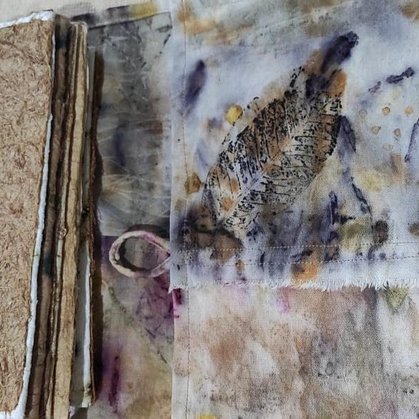 Kuxaán Xúum, Cecilia Moo, artists' handmade illustrated book on the Kuxaán Xúum story (The rope of life), 2022.
Kuxaán Xúum, Cecilia Moo, artists' handmade illustrated book on the Kuxaán Xúum story (The rope of life), 2022.
Some lessons from this story:
-
We need to work to strengthen the points that unite us and avoid reinforcing those that divide us.
-
The prophetess, who represents women, carries an encouraging and hopeful message. Her presence is crucial. Patriarchy does not have the final say in this world.
-
It is important to highlight the value of the wise older woman, which goes contrary to beauty standards that only revere youth.
-
The underworld, which is represented by the cenote, is not a place of punishment but the cradle of hope in an intertwined life.
-
The squareness of the box reminds us of the whole, not only of its parts.
-
We cannot look at life in a fragmented way, we must develop a more integrated perspective.
-
The bleeding rope reminds us of our ancestors who offered their blood, a vital element in the indigenous worldview.
-
Myths and words, both ancient and contemporary, serve to strengthen our culture.

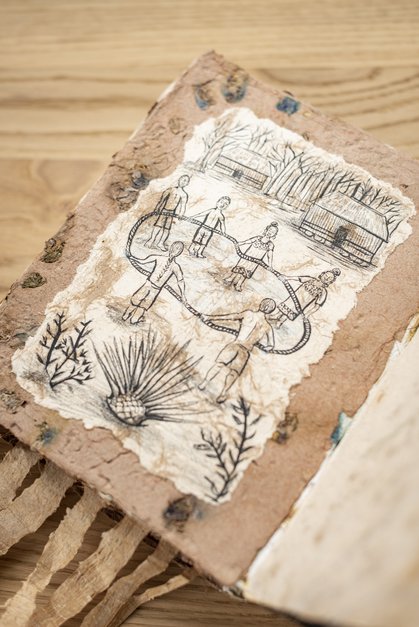 Kuxaán Xúum, Cecilia Moo, artists' handmade illustrated book on the Kuxaán Xúum story (The rope of life), 2022.
Kuxaán Xúum, Cecilia Moo, artists' handmade illustrated book on the Kuxaán Xúum story (The rope of life), 2022.
The men and women who live in Yucatán have been cut off time and time again with the intention of making us forget our beliefs, our language, and the great past we inherited from our elders. People have tried to erase and burn down our memory. The Maya people of Yucatán contemplate with sorrow the castration of the sun, watching our flowers wither, and with them our own lives. However, we fight stubbornly and tirelessly to maintain unity among families and peoples, and we resist the many threats of neocolonialism.
Together with other Indigenous Peoples, we fight to be recognized as such and demand respect for all ethnic groups and all peoples. We are entitled to our own identities—our own forms of government, language, clothing, land, etc.—and this is not an obstacle to working toward a united Amerindia.
Our struggle for life is what gives strength to indigenous communities and makes possible not only continental but universal ethnic unity. This will be our best contribution to other peoples and cultures, as we are all bound to the vital threads of our Mother Earth.
Maní, Yucatán, March 2022




